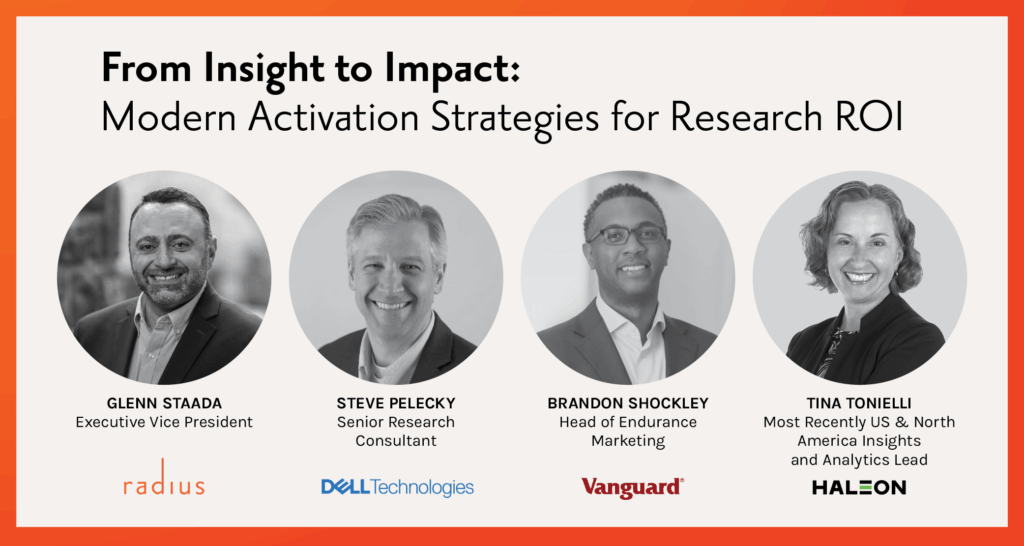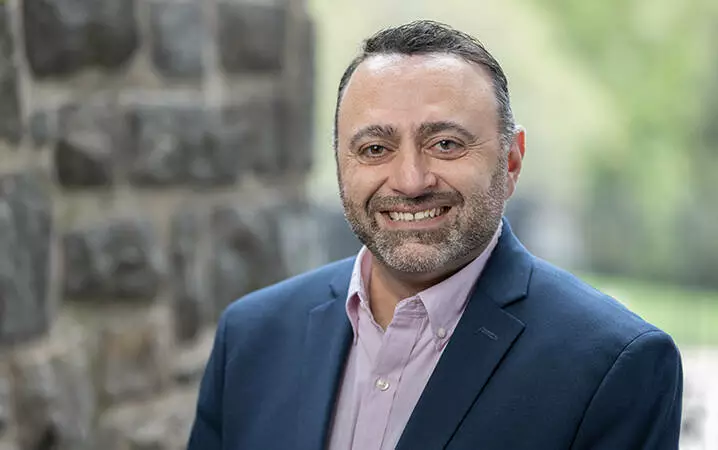This year’s TMRE conference in Las Vegas reflected the rapid pace of transformation we’re seeing in the insights industry, and underscored a breadth of opportunities. Sessions and break time conversations centered on how artificial intelligence is reshaping every stage of research from data collection to creative testing and the need to ensure human judgment guides decisions throughout the process.
Speakers at the conference shared strategies for balancing the use of AI with traditional research methods, the need to embed research earlier in product and creative development, and modernizing legacy methods for greater speed and clarity. Another strong theme was the role activation strategy plays in research ROI.

These themes were carried through in a session I hosted, From Insight to Impact: Modern Activation Strategies for Research ROI. Our panel was made up of three key brand-side insights leaders, Tina Tonielli, former Head of Insights and Analytics for North America at Haleon, Brandon Shockley, Head of Endurance Marketing at Vanguard, and Stephen Pelecky, Senior Research Consultant at Dell Technologies. During the panel, we examined how research moves beyond information-gathering to influence real business decisions.
Here are the five key issues our panel addressed:
1. Traditional ideas about the role of activation are being challenged.
Our panel opened with a discussion about the growing importance of activation outcomes in research.
Tina Tonielli talked about embedding the idea of influence into activation strategy. “Activation needs to end with the business decisions that have happened because you brought that into the conversation,” she said. “It stops with the decision you’ve helped to make.”
Brandon Shockley added that activation often means bridging silos inside large companies. Research teams can move freely across departments, which gives them access to more ideas. He noted that the value lies not in delivering reports but in being a long-term partner who helps the business see what to do next.
At Dell Technologies, a decision-first mindset guides every project, noted Stephen Pelecky. “We start from the decisions we want to make,” he said. “Our goal is for people to remember the research for the choices it enabled, not just what was learned.”
2. Researchers will need to get comfortable with expanding their roles.
Shockley noted that senior executives now expect dialogue rather than slide decks. “Don’t show up with a presentation,” he said. “Facilitate a conversation.” His team connects projects into a continuous story instead of isolated reports, supported by internal knowledge-sharing tools that let researchers build on each other’s work.
Tonielli described the decline of “data democratization,” the idea that everyone in a company should have full access to data. “Everybody wants the data until they get it,” she said. “Then they’re overwhelmed by it.” The role of insights, she argued, is no longer to hand over dashboards but to interpret and synthesize what matters most.
The panelists agreed that activation requires reducing complexity so stakeholders can focus on the few insights that truly move the business forward.
Activation needs to end with the business decisions that have happened because you brought that into the conversation. It stops with the decision you’ve helped to make.”–Tina Tonielli
3. To meet new expectations, researchers must develop new skills.
The conversation turned to what kinds of skills research teams need today.
Shockley outlined a new “skills map” for insights professionals that balances three areas: technical expertise, consulting ability, and operational agility. “The best researchers deliver answers,” he said, but noted that they also need to reframe problems and help others see how to solve them.
Tonielli added that influence is the defining soft skill. “Storytelling is important, but if you tell a story that doesn’t do anything, that’s a problem,” she said. “It’s about persuasive influence and having the courage to use it.” She also stressed the importance of curiosity and a growth mindset as technology changes rapidly.
Pelecky shared some straightforward advice: “Tell them what you think. Take a stand. Challenge assumptions. People will come to expect it from you and respect you for it.”
4. It’s more important than ever before to bring stakeholders into the mix.
Activation begins long before a report is written.
Pelecky described his own process as “laundry list, acceleration, and visualization.” He starts by rewriting every stakeholder question in plain language, listed exactly as it would be asked of a customer. That keeps the focus on what matters and forces early prioritization. From there, he builds a “ghost deck” while research is still in the field, sketching out how findings will be organized and discussed. This approach saves time and keeps teams thinking about outcomes rather than deliverables.
The discussion also touched on supplier collaboration. Shockley and Pelecky both emphasized the importance of clear, two-way communication and shared accountability. Tonielli took that point further, saying suppliers should do their own homework. “Don’t wait for me to spoon-feed you information,” she said. “Learn how things get done in our organization. If you understand that, you’ll help me a lot more.”
True activation, the panel agreed, depends on collaboration between corporate researchers and supplier partners who understand both the business problem and the internal culture behind it.
5. When it comes to activation, go deep.
Our speakers talked about the value of comprehensive activation planning, and the need to make recommendations that validate the research.
Three examples of activation-guided research:
Tonielli described a large-scale study on consumer demand and need states that reshaped how Haleon viewed its markets. The project involved more than 100 workshops and required persistence to keep momentum. “Don’t quit when it gets tough,” she said. “Activation is a process that takes patience.”
Shockley highlighted Vanguard’s Audience Deep Dives, a series of internal workshops designed to help marketers better understand women investors. Hundreds of employees participated, connecting research directly to business ideas and generating a pipeline of new concepts.
Pelecky offered a different perspective: sometimes activation means knowing when not to act. In one case, a concept test saved the company between $60,000 and $120,000 by showing that a proposed product would likely fail. “Sometimes the best activation,” he said, “is the one that stops you from doing the wrong thing.”
Focus your efforts on moving your business forward.
As companies adapt to new technologies and rising expectations, the challenge for researchers is not producing more data but making it matter, guiding choices that move the business forward.
Could an ROI-driven activation plan help you fund more projects?




